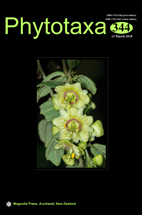Abstract
Phylogenetic relationships within the Relhania generic group, a southern African lineage of 45 yellow-flowered daisy species, are examined using parsimony and Bayesian analysis of plastid DNA, nuclear DNA, and morphological characters. The resulting phylogenetic hypothesis indicates that the species fall into two clades, one comprising the genera containing short-lived (annual / biennial) species, and the other exclusively perennial. Within the perennial clade, containing six genera, several well-supported and morphologically coherent clades are recovered. However, there is substantial generic non-monophyly and many relationships lack resolution, with several species being unplaced. Subdivision into multiple genera would require the recognition of up to twelve small or monospecific genera, and lack of resolution would render this solution potentially unstable. Instead, the six currently-recognised perennial genera Antithrixia, Comborhiza, Oreoleysera, Relhania and Rosenia are here synonymized under the oldest name, Oedera Linnaeus. An infrageneric taxonomy comprising eight sections is proposed for Oedera sensu amplo. This new, enlarged concept of Oedera is defined by the perennial life-history, by leaves with involute or flat margins, by pappus bristles (if present) that are never plumose, and by a base chromosome number of x = 7. Keys to the genera, an updated description of Oedera sensu amplo, and keys to the sections and species are provided. A total of 25 new combinations is made.

